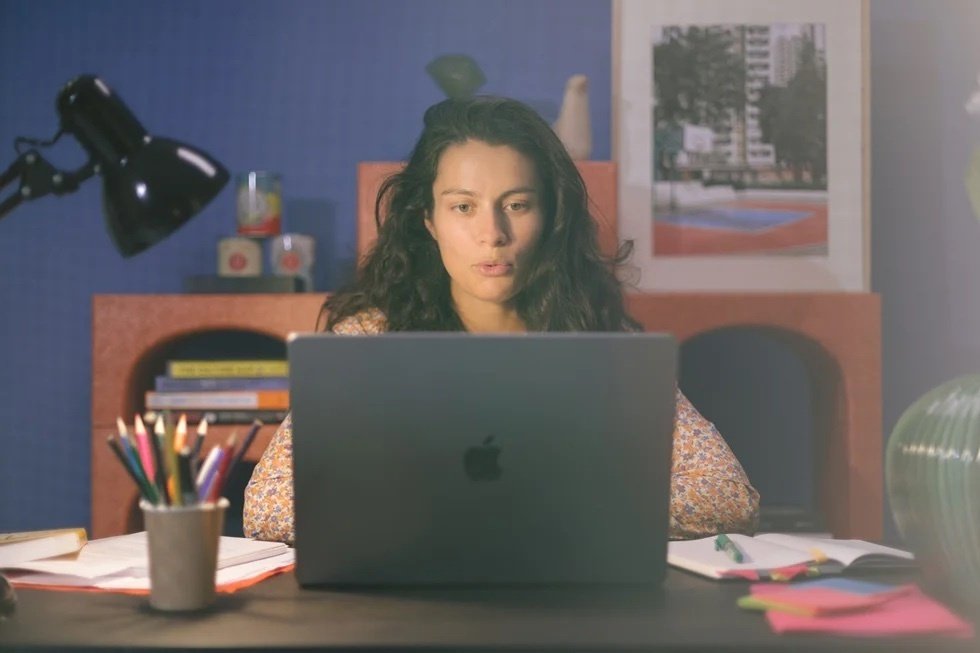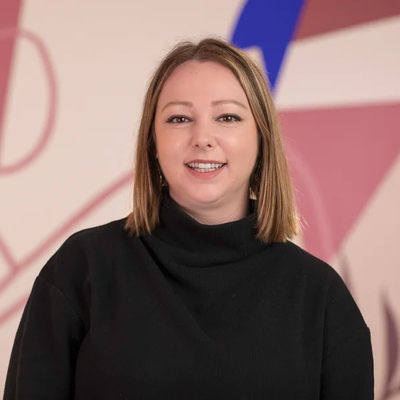UX designers: Essential skills, portfolio tips, and job search strategies
Oct 10, 2023
6 mins


US Editor at Welcome to the Jungle
User experience (UX) designers are crucial in making digital platforms user-friendly and engaging. Essentially, these professionals dive into users’ psyche, understanding their needs and preferences to design intuitive and functional interfaces. If this sounds like the career path for you, you’re in luck! The US Bureau of Labor Statistics anticipates a 16% growth in Web Developer and Digital Designer positions (encompassing UX roles) from 2022 to 2032, a rate described as “much higher than average.” As technology becomes more integrated and products move online, the demand for UX designers to create user-friendly platforms rises. So, it seems like now is better a time than ever to pursue a career in UX design.
Payal Bhujwala, a seasoned UX designer based in Chicago, explains the technical and soft skills, essential tools, portfolio strategies, and job-searching techniques you’ll need to land your dream job as a UX Designer.
Essential skills for UX designers
UX design isn’t just about colors, interfaces, or aesthetics. It’s about understanding the core user needs and crafting experiences that make digital interactions seamless and intuitive. Bhujwala emphasizes the pivotal role of various skills in shaping an efficient UX designer:
Collaboration and communication
Bhujwala places collaboration and communication at the top. She explains: “UX as a field requires a lot of collaborating and communicating with not just people in your team but also external stakeholders and people who are not from UX.” Weaving a compelling and clear narrative is fundamental. “You need to be able to present your ideas, tell a good story … and always keep [communication] in mind.”
Interaction design (IxD)
This skill revolves around understanding and reflecting user needs in the design, whether it’s a digital interface or a physical product. IxD is about “mapping out different user flows and mapping out your customer’s journey across phases.”
Wireframing, prototyping, and information architecture
These skills are closely knit. While wireframing and prototyping provide a skeletal structure to the design, guiding its development, Bhujwala notes that information architecture “is about understanding how a customer gets to a certain screen, and how the information is broken down on that page.” In essence, it’s organizing and structuring information to ensure it’s easily digestible for the user logically and intuitively.
Visual design
While UX designers don’t need to be an expert in visual design, a good grasp is essential. Bhujwala suggests this skill can “help you communicate your ideas better.” Visuals can often convey more than lengthy explanations, making this skill a powerful tool for communication.
User research
Although Bhujwala works in an environment where specific tasks like user research are allocated to specialists, she recognizes its significance, especially in smaller companies or startups. This skill involves understanding user needs by conducting interviews and facilitating sessions to glean insights. “Starting with a very generative mindset and then getting down to a more specialist mindset” is critical for comprehensive user research, she explains.
Essential soft skills for UX designers
While technical skills form the backbone of a proficient UX designer, soft skills set exceptional designers apart. Bhujwala provides insights into the soft skills she considers crucial:
Presentation skills
In the realm of UX design, being able to articulate and present your ideas effectively “is absolutely necessary,” she explains. In professional settings, especially in consultancy, designers often find themselves presenting their concepts to clients and external stakeholders. Thus, honing presentation skills not only enhances clarity but also boosts a designer’s confidence when pitching ideas.
Workshop facilitation
While this might not be a skill extensively taught in educational settings, workshop facilitation grows in importance as one delves deeper into the professional world of UX design. Bhujwala notes that although it isn’t mandatory, it can be a game-changer. Facilitating workshops requires a designer to engage participants. She states, “You want to engage people in a room and keep them energized even after four hours.” This skill not only speaks of a designer’s expertise but also of their understanding of human behavior and dynamics—crucial in the field of user experience.
Essential tools for UX designers
Bhujwala emphasizes the importance of adaptability, highlighting that proficient UX Designers not only choose tools to streamline processes and boost collaboration but also continually embrace new methodologies and tools to meet client needs and industry evolution. Bhujwala shares the top tools she considers indispensable:
Interaction design & wireframing
- Figma: She underscores the industry’s growing emphasis on collaboration, with Figma emerging as a preferred tool. Suitable for “designers, researchers, product managers, [and] developers,” its collaborative features distinguish it from its peers.
- Sketch: Even though newer tools are making waves, Bhujwala acknowledges the relevance of classics like Sketch. She notes that “a lot of companies still use Sketch,” so having foundational knowledge is advantageous.
Prototyping
- Framer and Principle: Those leaning towards design should acquaint themselves with these prototyping tools, facilitating the visualization and testing of their concepts.
- Adobe XD: This tool simplifies design and prototyping. Bhujwala emphasizes the importance of adaptability, noting her experience adjusting to client preferences by learning this tool.
Data Visualization
- Tableau: For UX designers dealing with quantitative research, Bhujwala champions Tableau for its superior data visualization capabilities.
Visual Design & Production
- Adobe Suite: While Figma covers a broad spectrum of design needs, Bhujwala hints that the Adobe Suite is invaluable, especially for “more production work.”
Portfolio tips for UX designers
According to Bhujwala, a portfolio is not just a collection of work but also your personal narrative. She emphasizes that a UX designer’s portfolio should be a curated story, illustrating one’s evolution, lessons from projects, and design decisions without adhering strictly to rigid checklists.
The portfolio vs. resume debate
- Portfolio: It’s the space where you narrate your design story, highlighting your contributions and how they’ve shaped your skills. “Your portfolio is like a book that someone is essentially going to read to get to know more about you,” Bhujwala says.
- Resume: This is a concise list of experiences and impacts that opens doors and piques interest in exploring the portfolio, she explains.
Organizing your portfolio
Focus on projects by detailing each project, emphasizing:
- Who you designed for
- Your team composition
- Your specific role in the project
- The project’s duration
- Final outcomes and their impact
Content is key
- Aim to strike a balance. Show enough to support the narrative without overwhelming the viewer. “You just need to show enough for the recruiter to understand what led you to the outcome,” Bhujwala points out.
- Avoid the checklist trap. Not every project needs to show the whole process, like research, personas, and wireframes. Include what’s most relevant to the narrative.
Visual representation
- Display the final product.
- Include select materials that bolster your design decisions. You don’t need to show every detail, just sufficient content to explain your journey to the result.
Perfecting the portfolio
- While refining your portfolio is essential, don’t let the pursuit of perfection deter you from job applications. “Your story may or may not click with someone in a certain way,” she says. “Sometimes the simpler versions might resonate more with viewers.”
- In portfolio review rounds, she explains you’ll have the opportunity to go deeper and show materials that back your design choices.
Job search strategies for UX designers
Securing a job in UX design can be competitive, so here’s a concise guide to help UX designers navigate the job search according to Bhujwala:
Networking is crucial
Beyond sending out resumes and cold applications, networking has proven indispensable. Engage with peers from similar programs or those working in your dream companies to understand team structures, roles, and responsibilities. “That helps to tailor your application, or even tailor your interview process,” she adds.
Automated resume screenings
Recognize that many large companies use automation tools. Often, resumes aren’t viewed by a person but are automatically screened and possibly rejected. Networking can be a way to bypass these automated systems and get your work to the right individuals.
Building a personal brand
A consistent personal brand can refine your visual design skills and communicate your essence. Remember, everything is subjective. “A lot of times, people even judge folks by the amount of color they use on our website or the kind of font choices they make,” Bhujwala notes.
Ensure coherence across all your assets, including resumes, portfolios, and even the content on platforms like LinkedIn. This consistency provides a holistic view of you as a candidate, showcasing your professional and personal attributes.
Don’t be afraid of a career change into UX design
The world of UX design is not just confined to those with a traditional design background. Bhujwala’s experience in her UX design Master’s degree at Carnegie Mellon University shows that individuals from varied fields, including chemistry and biology, can transition into UX. Regardless of one’s career origin, she does mention that roles in “product development” might offer a beneficial stepping stone.
UX design is as much about understanding diverse user needs and crafting holistic experiences as it is about one’s journey into the domain. As Bhujwala says, “Any kind of experience can help in some way or the other,” emphasizing the inclusive and dynamic nature of UX design. With the right technical skills, soft skills, and tool expertise forming the pillars, and with personal branding, networking, and adaptability, you will succeed in UX design.
Photo: Welcome to the Jungle
Follow Welcome to the Jungle on Facebook, LinkedIn, and Instagram, and subscribe to our newsletter to get our latest articles every week!

More inspiration: Find a job

Written in the stars: How astrology can boost your job hunt
Looking for cosmic career advice? From Aries bosses to Virgo perfectionists, your zodiac sign could be your guide to landing the perfect role.
Dec 24, 2024

Find your dream job through the quiet power of self-awareness
"It’s much easier to reach your dream destination when you know exactly where you want to go."
Nov 27, 2024

5 top US cities that recent grads are flocking to
The job market remains a challenging landscape for recent graduates, and some are looking to move for better job prospects.
Nov 19, 2024

Spooky Special: 5 frightening fumbles to avoid on the job hunt
Boo! Don't let the job hunt be the scariest thing you do this Halloween. Here are 5 spooky mistakes and how to avoid them.
Oct 24, 2024

Are durable skills the key to lasting career success?
Ever wondered what really makes a career last? The key might be mastering the right skills that evolve with you.
Oct 15, 2024
The newsletter that does the job
Want to keep up with the latest articles? Twice a week you can receive stories, jobs, and tips in your inbox.

Looking for your next job?
Over 200,000 people have found a job with Welcome to the Jungle.
Explore jobs